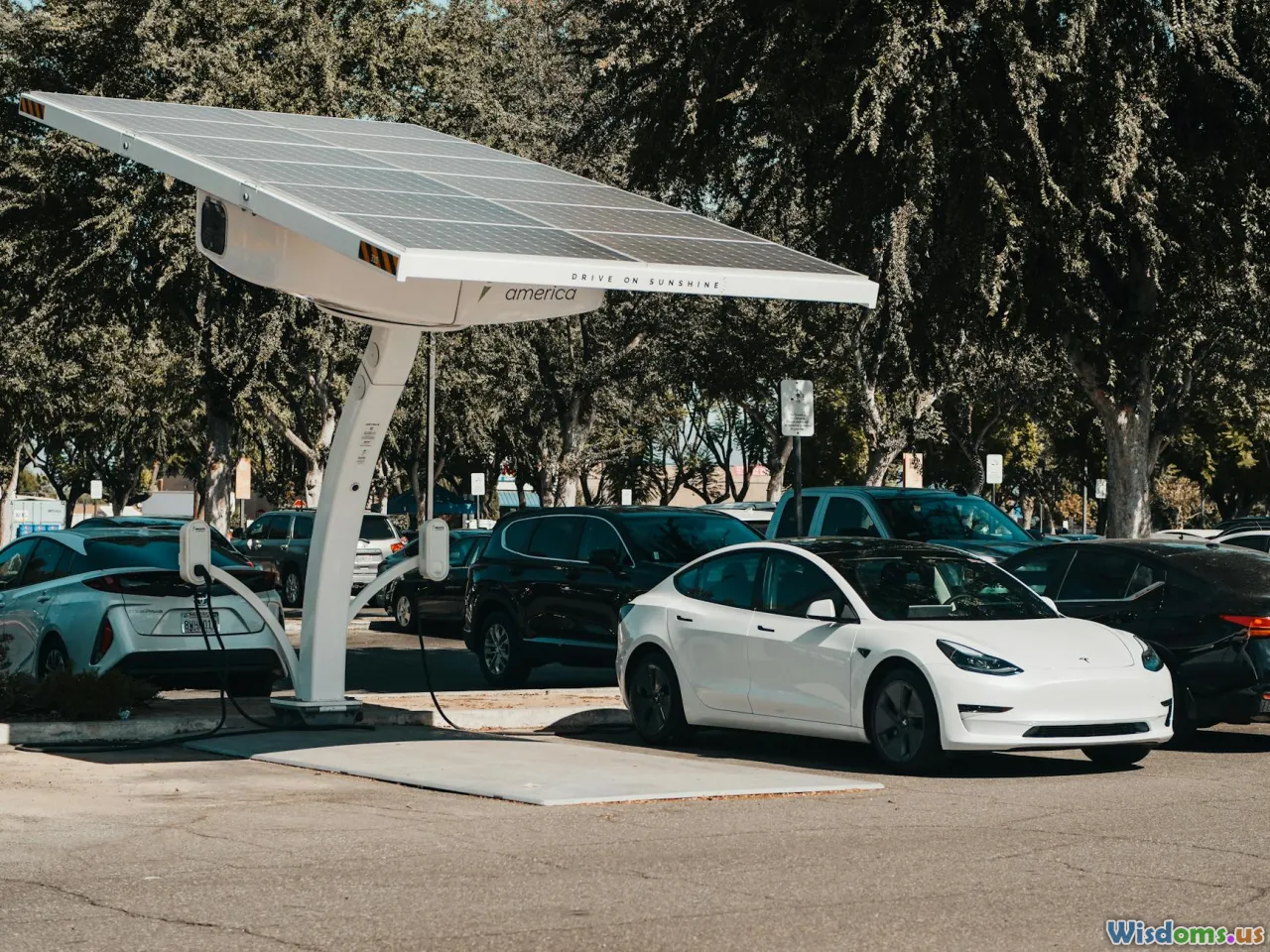
Challenges in Electric Vehicle Adoption
8 min read Explore the key challenges slowing electric vehicle adoption and what it means for the future of transportation. (0 Reviews)
Challenges in Electric Vehicle Adoption
Electric vehicles (EVs) have rapidly transformed from futuristic concepts into mainstream options, heralding a new era in transportation aimed at reducing carbon emissions and our dependence on fossil fuels. However, despite growing enthusiasm and significant advances, EV adoption remains slower than many environmental goals require. What obstacles are impeding the electric revolution on wheels? This article dives deep into the critical challenges hindering widespread EV adoption, backed by industry data, consumer insights, and real-world examples.
The Promise and the Current State of Electric Vehicles
Governments worldwide have set aggressive targets to phase out internal combustion engines to combat climate change, with nations like the UK banning new petrol and diesel cars by 2030. EV sales have soared recently—global electric car stock surpassed 16 million in 2021, a 41% increase from the previous year according to the International Energy Agency (IEA). Yet, electric vehicles still comprise a small fraction of total vehicle sales globally. The reasons lie in a complex interplay of economic, technological, and social factors.
High Purchase Costs: The Frontline Barrier
One of the most significant hurdles is the upfront cost of EVs. Compared to internal combustion vehicles, EVs—especially fully electric battery-powered models—often carry a premium price tag mainly due to expensive lithium-ion battery packs. For example, while a conventional compact sedan might cost $20,000, a comparable electric model frequently starts at $35,000 or more.
Although battery prices have dropped dramatically (from around $1,200 per kWh in 2010 to about $132 per kWh in 2021 according to BloombergNEF), this reduction hasn’t entirely translated into affordable vehicles for the average buyer.
This upfront expense can discourage lower-income consumers and those with limited access to government incentives or subsidies. Studies have shown that incentives such as tax credits significantly boost EV purchases, as seen in Norway where strong subsidies helped EVs capture over 80% of new car sales in 2021.
Charging Infrastructure: The Backbone Yet to Mature
Beyond initial costs, practical concerns dominate consumer hesitation. The availability and accessibility of charging infrastructure remain major obstacles. Unlike gas stations, which are ubiquitous and allow rapid refueling, EV charging is still patchy, particularly outside major urban centers or in developing countries.
The charging speed is another issue. Standard home charging supplies (Level 2 chargers) can take 6-8 hours to fully charge an average EV battery, while fast chargers (DC fast chargers) vary in availability but still cover limited routes and locations. For long-distance travelers or urban dwellers without home parking, this creates “range anxiety”—the fear of running out of charge midway without a convenient charging option.
Countries are scrambling to expand networks. For example, the European Union aims to install one million public chargers by 2025, but current infrastructure continues to lag behind consumer needs, highlighting a chicken-and-egg dilemma: investors hesitate without demand certainty, and consumers hold back due to insufficient infrastructure.
Technological Challenges and Battery Concerns
Battery technology underpins every EV, making advances here critical. Today’s lithium-ion batteries offer reasonable driving ranges, with many models spanning 200-300 miles per charge, yet some consumers remain skeptical about longevity, degradation, and replacement costs.
Batteries also pose ethical and environmental concerns. Lithium and cobalt mining have been criticized for human rights issues and environmental damage, which paradoxically challenges the sustainability narrative EVs promote. Manufacturers and researchers are pushing for alternatives such as solid-state batteries that promise higher energy densities, faster charging, and reduced material dependence, but these remain largely in development.
Consumer Behavior and Public Perception
Adoption is also shaped by human factors. Misconceptions about EV reliability, range limitations, or additional maintenance costs persist despite improvements and industry transparency. A 2022 Consumer Reports survey revealed that nearly 30% of respondents cited lack of knowledge about EVs and concerns over charging as reasons for not buying one.
Additionally, cultural attachment to traditional vehicles and resistance to change in established habits slow adoption. For instance, rural regions with longer daily travel distances face particular challenges that complicate switching to EVs without corresponding infrastructure.
Commercial fleet operators, important for scaling EV use, often resist due to higher upfront costs and concerns about vehicle availability or charging logistics in their operations.
Policy, Market Dynamics, and Global Disparities
Government regulations, subsidies, and industrial policies are pivotal in EV adoption. Regions with supportive frameworks, such as California with its Zero Emission Vehicle program, see high adoption rates. However, policy inconsistency or underinvestment elsewhere creates fragmented markets.
Moreover, EV adoption is uneven globally. Wealthier nations lead, while developing countries grapple with affordability, power grid capacity, and scarce charging station investments. Plugging EV adoption into broader socio-economic contexts reveals inequality challenges in green technology access.
Overcoming Challenges: The Path Forward
Addressing these challenges requires a multipronged approach:
-
Incentivizing Affordability: Sustained subsidies, tax incentives, and low-interest financing can lower economic barriers. Supporting the mass manufacture of affordable models also helps.
-
Building Infrastructure: Public-private partnerships to expand fast-charging networks, especially in underserved areas, will ease range anxiety.
-
Advancing Technology: Continued R&D on batteries aims to improve cost, capacity, and sustainability.
-
Educating Consumers: Transparent information campaigns and accessible demonstrations can change perceptions.
-
Global Collaboration: Sharing best practices and technology between developed and developing economies ensures inclusive progress.
Conclusion
Electric vehicles represent a necessary evolution towards sustainable mobility but face multifaceted challenges across cost, technology, infrastructure, and social acceptance. Successfully navigating these hurdles demands coordinated action from industry leaders, policymakers, communities, and consumers alike. The road ahead is complex but navigable—every resolved barrier brings us closer to a cleaner, electrified future of transport.
Electric vehicle adoption is not just a matter of technological innovation but of systemic transformation touching economics, policy, infrastructure, and human psychology. As these dimensions align, EVs are positioned to shift from niche novelties to global status quo, significantly impacting the fight against climate change and shaping 21st-century mobility.
Rate the Post
User Reviews
Other posts in Battery Technology
Popular Posts
















